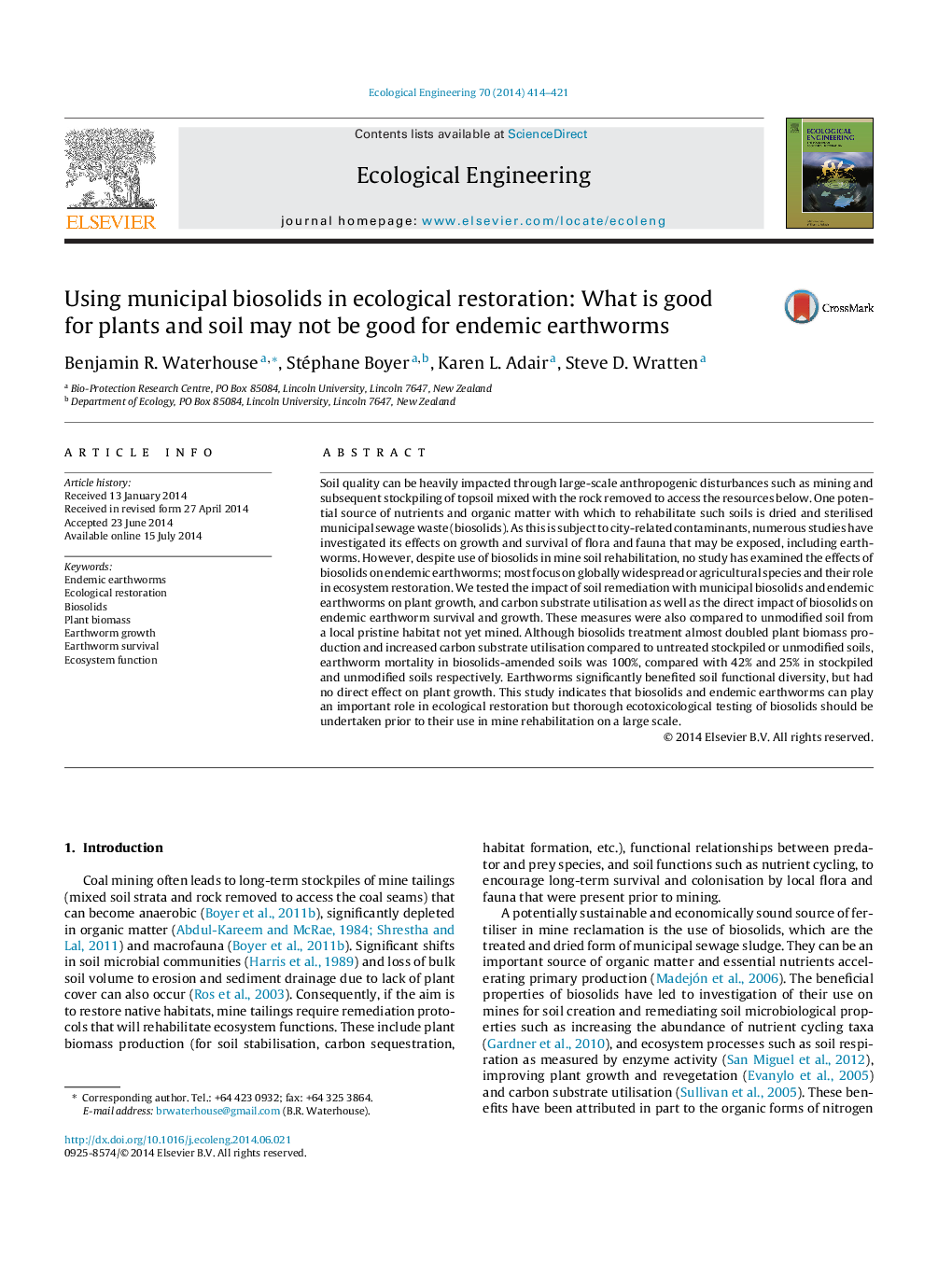| Article ID | Journal | Published Year | Pages | File Type |
|---|---|---|---|---|
| 6302212 | Ecological Engineering | 2014 | 8 Pages |
Abstract
Soil quality can be heavily impacted through large-scale anthropogenic disturbances such as mining and subsequent stockpiling of topsoil mixed with the rock removed to access the resources below. One potential source of nutrients and organic matter with which to rehabilitate such soils is dried and sterilised municipal sewage waste (biosolids). As this is subject to city-related contaminants, numerous studies have investigated its effects on growth and survival of flora and fauna that may be exposed, including earthworms. However, despite use of biosolids in mine soil rehabilitation, no study has examined the effects of biosolids on endemic earthworms; most focus on globally widespread or agricultural species and their role in ecosystem restoration. We tested the impact of soil remediation with municipal biosolids and endemic earthworms on plant growth, and carbon substrate utilisation as well as the direct impact of biosolids on endemic earthworm survival and growth. These measures were also compared to unmodified soil from a local pristine habitat not yet mined. Although biosolids treatment almost doubled plant biomass production and increased carbon substrate utilisation compared to untreated stockpiled or unmodified soils, earthworm mortality in biosolids-amended soils was 100%, compared with 42% and 25% in stockpiled and unmodified soils respectively. Earthworms significantly benefited soil functional diversity, but had no direct effect on plant growth. This study indicates that biosolids and endemic earthworms can play an important role in ecological restoration but thorough ecotoxicological testing of biosolids should be undertaken prior to their use in mine rehabilitation on a large scale.
Related Topics
Life Sciences
Agricultural and Biological Sciences
Ecology, Evolution, Behavior and Systematics
Authors
Benjamin R. Waterhouse, Stéphane Boyer, Karen L. Adair, Steve D. Wratten,
